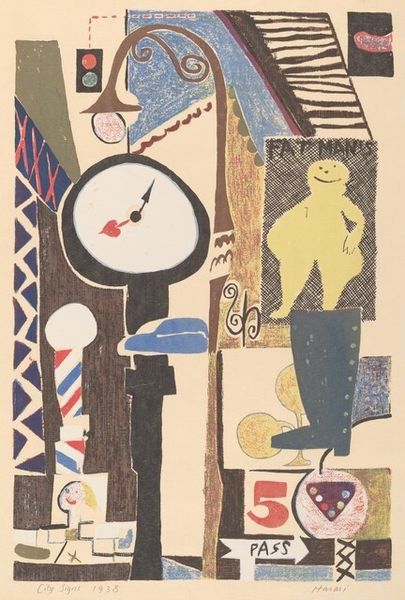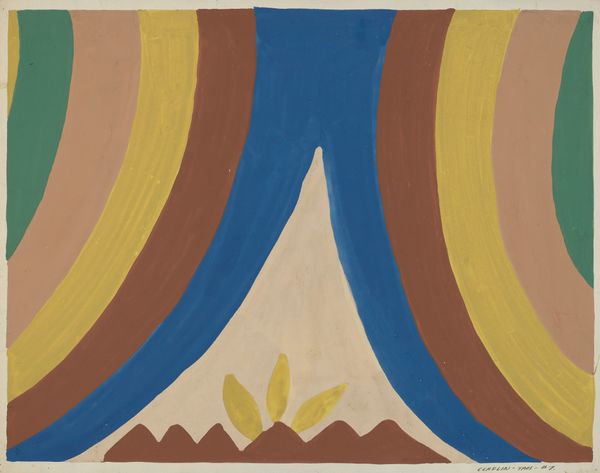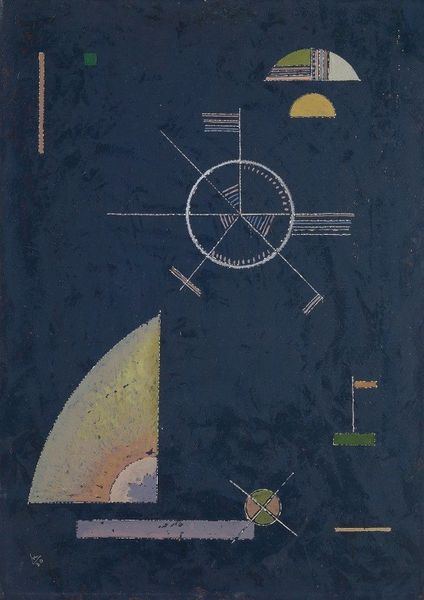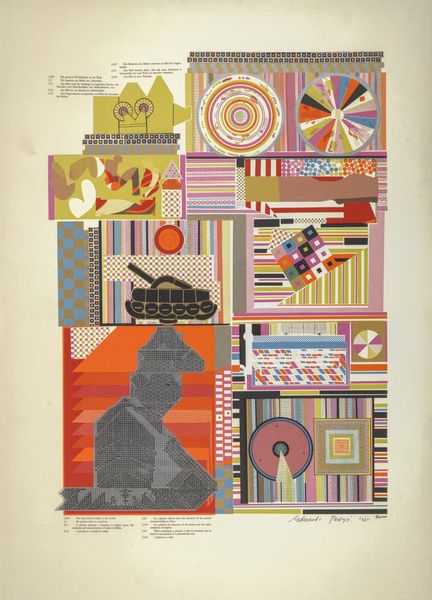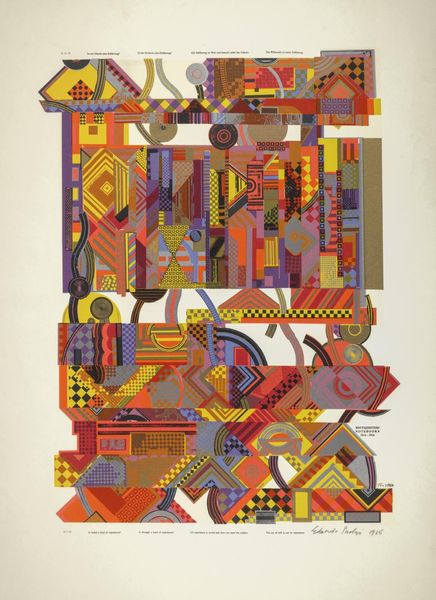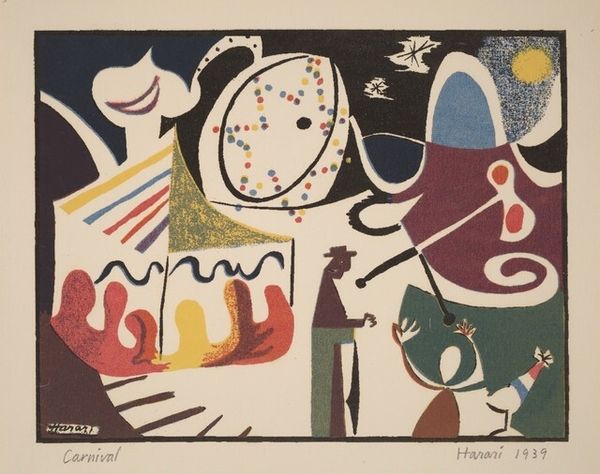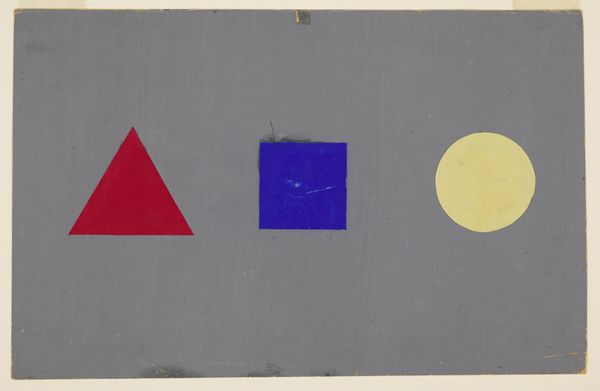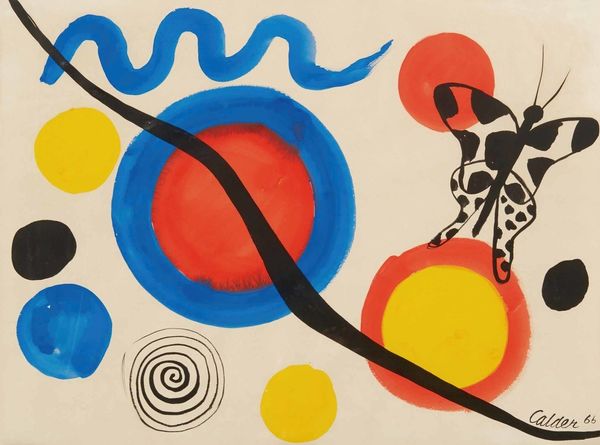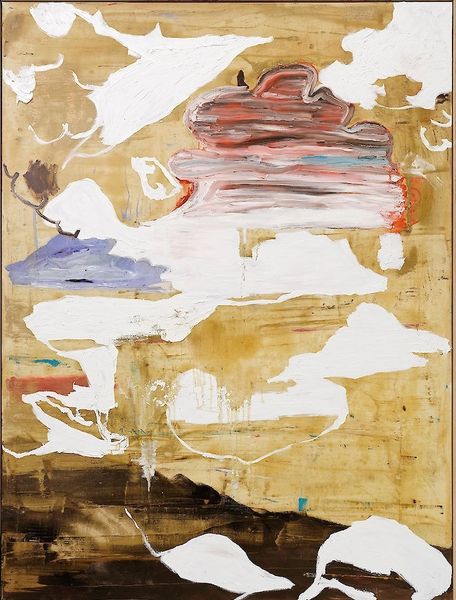
painting
#
water colours
#
painting
#
acrylic on canvas
#
geometric
#
geometric-abstraction
#
abstraction
#
modernism
#
watercolor
#
indigenous-americas
Copyright: David Chethlahe Paladin,Fair Use
Curator: David Chethlahe Paladin’s work, "Four Sacred Mountains," painted in 1973, is rendered in watercolor. Its geometric elements feel at once contemporary and deeply connected to traditional indigenous American art. Editor: My initial reaction is one of serene contemplation. The subdued ochre background creates such a peaceful tone. It almost feels like a topographical map viewed through the lens of memory. Curator: Considering Paladin's work, especially within the sociopolitical climate of the 70s, we can see a resurgence of Indigenous voices reclaiming cultural narratives. He blends abstract forms with symbolism rooted in his Diné heritage. These aren’t simply landscapes; they represent layered spiritual landscapes. Editor: I find the artist's visual language truly intriguing. He has taken elements and motifs--the sun, the stylized figures, the mountains, of course--and distilled them to their bare essence. It certainly raises questions about how Paladin navigates between personal expression and collective cultural identity. Do we know much about how audiences at the time engaged with this synthesis of tradition and modernism? Curator: Early audiences recognized it both as art and cultural statement. There were readings that linked the abstract forms to modernist explorations of perception while critics often placed emphasis on its expression of Indigenous sovereignty through symbolic imagery. Paladin intentionally combined modern artistry with cultural heritage, navigating that liminal space so many Indigenous artists occupied. Editor: Yes, the deliberate combination speaks volumes, and creates a visual language, seemingly simple at first, loaded with depth. It offers layers upon layers of symbolic representation tied to his identity. It speaks volumes to his artistry and legacy. Curator: The visual construction encourages us to challenge how the art world often tries to confine non-Western art to narrow identity politics. It really speaks to larger historical concerns about power. Editor: "Four Sacred Mountains," as a case study, really prompts a crucial reassessment of what constitutes ‘Indigenous art,’ its dialogue within the art market, and how cultural institutions engage with such complex identities. I see this as more than landscape. Curator: Absolutely, there are ways the cultural values shape artistic interpretation in museum settings and in broader culture.
Comments
No comments
Be the first to comment and join the conversation on the ultimate creative platform.
